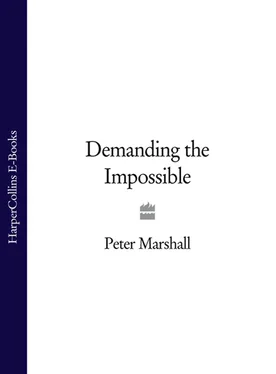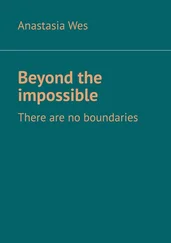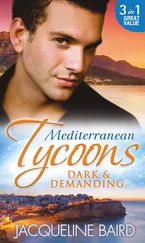After the debacle, itinerant preachers spread the gospel of violent millenarianism in the Low Countries and South Germany. The bookseller and printer Hans Hut, who had escaped from the battle of Mühlhausen, called for a social revolution, echoing both the views of John Ball and the Taborites: ‘Christ will give the sword and revenge to them, the Anabaptists, to punish all sins, stamp out all governments; communize all property and slay those who do not permit themselves to be rebaptized.’ 20 Hut was arrested and executed, but his message spread rapidly in South Germany. Millenarian groups sprang up, many of them rejecting all rites and sacraments, living according to the Inner Light, and holding their possessions in common.
It was however in Münster, a small ecclesiastical city-state in north-west Germany, that the radical Anabaptists tried under the inspiration of Jan Bockelson (John of Leyden) to establish a New Jerusalem in 1534. They called on their brothers and sisters to live in a community without sin and held together by love. They pooled their goods, including food, and gave up money. But the authoritarian tendencies in their teaching came to dominate: they burnt all books save the Bible. Although Münster had been governed by an elected council, Bockelson set up a new government of twelve elders. In their name, he introduced a new legal code which made practically every crime or misdemeanour a capital offence, from treason to answering back one’s parents. Although an abundance of women led them to accept polygamy (based on the text in Genesis: ‘be fruitful and multiply’ [1: 22]), he imposed a strict morality with the death penalty for adultery.
In the end, Bockelson, the self-proclaimed Messiah of the Last Days, crowned himself King of the People of God and Ruler of the New Zion. A master of manipulating the people through pageants and feasts, his programmes met with little resistance and life seems to have been a round of constant exultation. Unlike the Taborites, he managed to introduce a communism of production as well as consumption, and guild members worked without wages. The sense of community was all-important in its success. But weakened by a prolonged siege and famine, Münster eventually fell in 1535.
The experience led the Anabaptists to become rigorous pacifists. They continued to set up communities, especially in Eastern Europe. Jacob Hutter, an extreme millenarian, communitarian and pacifist had a widespread influence in Moravia which led to his martyrdom. The Hutterite Chronicles record how his group moved to a village near Austerlitz in 1528 and ‘spread out a cloak before the people, and every man did lay his substance down upon it, with a willing heart and without constraint, for the sustenance of those of necessity, according to the doctrine of the prophets and apostles (Isaiah 23, 18; Acts 2, 4–5)’. 21 Although the local prince said he would defend their refuge against Vienna, the leaders replied: ‘Since you promise to resort to the sword, even to protect us, we cannot stay.’ The Hutterite colonies were highly successful and although they believed in decent poverty the efficiency of their communist economy made them wealthy. The members of the colonies practised godly watchfulness on each other, and the marriages were arranged with the help of the elders. The Moravian nobles were forced by the Church and Empire to expel them from their estates in 1622. They scattered, eventually to find their way to the United States and Canada.
The peasant revolts of the Middle Ages cannot all be said to be entirely libertarian. They called for a freeing of feudal ties and rejected the new serfdom being imposed on them by the nobility in the form of heavy taxes. They appealed to their traditional rights under ‘common law’, but also wanted to become free labourers. The millenarian sects which emerged often channelled their discontent and aspirations, looking to divine law to replace man-made law. They rejected the claims of the upholders of political power as well as the ordinances of the moribund Church. The more extreme sects, like the Brethren of the Free Spirit, believed that once united with God, no law, divine or temporal, applied, and the individual could do what he or she would. While this celebration of freedom anticipates anarchism, in practice many of the Spiritualists were libertines who despised and exploited those who were not in ‘a state of grace’ like them.
The same ambivalence is to be found in the various millenarian attempts to realize heaven on earth. The Taborites came nearest to establishing an anarcho-communist order, but their communism did not go far beyond consumption and they were reduced to taking from their neighbours. The Anabaptists in Münster went farther in their communism, but ended up establishing a regime of terror. And while subsequent Anabaptists became pacifist, their communities were in many ways intolerant. Like Christianity itself, the legacy of the revolutionary millenarians and mystical anarchists of the Middle Ages is mixed.
WHILE THE GREAT MEDIEVAL rebellions clearly had libertarian and egalitarian aspirations, they took place within a world view which gave little importance to the individual. Every person had his or her allotted place in a hierarchical society which existed within a great Chain of Being which descended from God. The king was seen as God’s representative on earth, and ruled by divine right. The community of peasants was based on mutual aid and shaped by custom, but they allowed little room for nonconformity or autonomy. Even the medieval cities with their guilds celebrated by Kropotkin had strict rules and codes of conduct. It was only with the Reformation and Renaissance in Europe that the individual was considered to be an autonomous person with a right of private judgement.
In the Civil War and Revolution in England in the seventeenth century, this new sense of the rights of the individual was added to the old demands for economic security and freedom from tyranny. For the first time, a recognizably anarchist sensibility can be discerned.
Just as in the periods of social unrest in the Middle Ages, millenarian sects came to the fore during the turmoil of the English Revolution. There was even a hectic if short-lived revival of the ‘Free Spirit’ amongst groups known as the Diggers and the Ranters who formed the extreme left wing of the republican movement. Unlike the constitutionalist Levellers who accepted the sanctity of private property and retained a faith in Parliament, they claimed they were True Levellers and demanded economic as well as political equality. 1 There had been communist theories before, but the Digger spokesman Gerrard Winstanley was the first to assert clearly that ‘there cannot be a universal liberty till this universal community is established’. 2 They understand the crucial point that State power is intimately linked to the system of property.
The English Revolution was a time when it seemed possible to turn the world upside down, not only overthrow the existing State and Church but to end the Protestant ethic with its stress on work, ascetism and discipline. Winstanley and the Diggers were convinced that ‘the present state of the old world is running up like parchment in the fire, and wearing away’. 3 There was a new mobility and freedom: ‘masterless men’, a hitherto unthinkable concept, stalked the land calling for the abolition of all masters; even some husbandless women were claiming the right to choose whom to kiss. They happily combined the myth of an equal society in the Garden of Eden before the Fall with the myth of Anglo-Saxon freedom before the Norman Yoke. As Christopher Hill has pointed out, there was a remarkable liberation of energy during the English Revolution: ‘Men felt free: free from hell, free from priests, free from fear of worldly authorities, free from the blind forces of nature, free from magic.’ 4
Читать дальше












